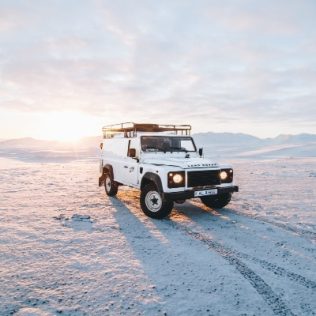The stunning nordic country of Iceland is renowned for its glacial landscapes, impressive scenery and diverse terrain. This dramatic island is brimming with places to explore alongside adventure at every twist and turn.
Many tourists seek to visit Iceland in winter to marvel over the snow-capped peaks and mighty glaciers. Whilst the country is truly magical during this time, it does come with its limits. The weather conditions and snow-dusted roads can be a cause for concern for lots of motorists.
If you’re seeking a trip to Iceland in winter, you’ll no doubt encounter some snow and tricky paths. However, the risks are outweighed by the incredible experience that awaits you in this stunning country. Below has all the information you need so that you can navigate the roads safely during this time.
Driving in Iceland in Winter: Things to Know
Iceland typically displays consistency in climate, meaning it can be hard to differentiate between the seasons. Many say that the island only has two seasons, winter and mild winter. In general, there tends to be more snow and colder temperatures from November through to March in Iceland. This is also a great time to catch a glimpse of the Northern Lights.
There are a few things that you must know about before choosing to self-drive in Iceland in winter. These tips will help keep you and others safe while travelling through the island.
Know the Road Conditions
Before embarking on your journey, be sure to check the road conditions. The weather can change quickly in Iceland, so it’s important to know this before setting off. Knowing what type of weather is expected will help you prepare better for your road trip and will determine if it’s safe to travel that day. You can find all the information you need for road conditions in Iceland at https://www.road.is/.
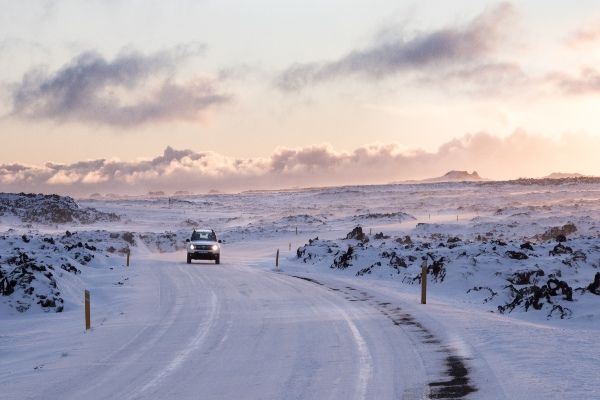
Don’t Rush!
The roads in Iceland are also very different to those in many other European countries. With rural F-roads and tracks off the beaten path, it’s important to always take your time.
Along your journey, you will find river crossings, bumpy roads and rugged cliff edges. Pair this with snow, wind or ice and it becomes increasingly difficult. Taking your time will help you assess the roads better, minimising the chance of an accident. Plus, there are so many wonderful sights along the way, you will want to go slow enough to capture them all.
Choose the Right Vehicle
The vehicle you choose to voyage around Iceland will also determine what roads you can travel on in winter. With the rural roads providing rougher conditions, a 4×4 or 4-wheel drive is highly recommended. This will help you navigate through parts of snow and ice and is much safer than a standard 2-wheel drive.
Choosing the right car rental company is also essential. They will be able to help guide you on the best vehicle for your trip, alongside offering extra tips and advice for your journey.
Time your Trip
When travelling around Iceland in winter, it’s important to bear in mind that the days are shorter. You should always plan your trip around daylight to prevent driving in the dark. If you are unfamiliar with the roads in Iceland, this is especially important as limited visibility can cause accidents.
Be Prepared
Preparation is key for driving in Iceland. If you have never driven in snow before, it’s worth checking out some great courses that will help you get to grips with these conditions. Taking time to prepare yourself for your journey will only help you enjoy the trip more. Knowing you can travel these roads with confidence and knowledge will give you more time to take in the stunning scenery surrounding you in Iceland.
Can You Drive in Iceland During Winter?
Nothing is stopping you from driving in Iceland in winter, but it’s important to evaluate a few things beforehand. To help you make an informed decision on whether or not you should drive in this beautiful country during the colder months, check out the list below:
- How confident are you driving in winter conditions?
- How experienced a driver are you?
- Can you safely evaluate conditions and make informed decisions?
- Do you have an appropriate vehicle?
After you have considered the above, it should help you decide whether or not to drive in Iceland in winter. There are also many benefits to taking a road trip on the island during this time.
With fewer tourists, Iceland is generally quieter in winter, making the top sights easier to see without busy crowds. Most of the roads are quieter with traffic, giving you the freedom to go at your own pace. The scenery in the country during this time is also breathtaking. You will find shimmering frosted landscapes and mighty mountains topped with snow – something not to be missed!
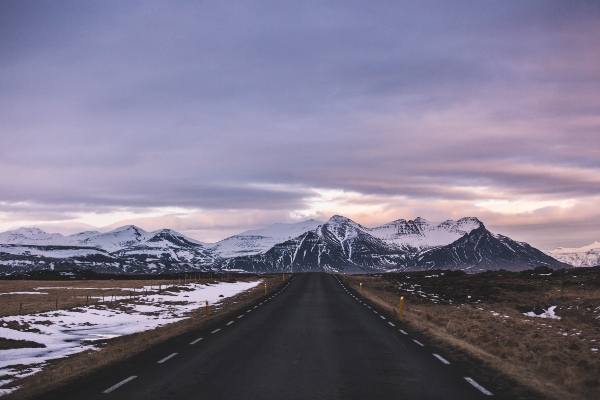
Driving Conditions During Winter in Iceland
It’s important to know the different driving conditions when determining if it is safe to drive in Iceland in winter. The weather throughout the country can vary drastically, from thin layers of snow on the roads, to clear paths and windy dunes that block routes. Planning ahead of your journey will help you better prepare for these road conditions in Iceland.
Driving on Iceland’s Ring Roads in Winter
You are likely to drive on Iceland’s ring road when visiting the island and you’ll be happy to hear that it is relatively easy to navigate. The roads are cleared often due to their frequent use, meaning you shouldn’t encounter any problems.
Driving on Iceland’s Secondary Roads in Winter
Secondary roads allow access to many of Iceland’s attractions, suggesting you are also likely to travel these. They are generally well-paved and allow lanes going in both directions, creating more space for traffic to pass. Due to heavy snow and ice, these roads can be closed during winter, so it’s always best to check these routes before setting off on your voyage.
Driving on Iceland’s F-Roads in Winter
Some of the trickier paths to navigate in winter are Iceland’s F-roads. Also referred to as gravel roads, or rural routes, these paths are not maintained throughout the winter. You will also find many of the F-roads closed during this time of year to keep the routes intact and motorists safe. Usually, the gravel roads are open from mid-June to September, depending on the weather during this time. You can check Iceland’s mountain roads, alongside the opening and closing times here.
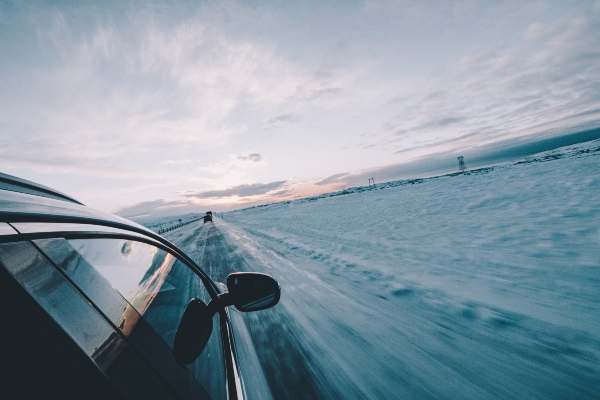
Renting a Car in Iceland During Winter
As previously mentioned, renting a suitable vehicle is essential when planning a road trip in Iceland in winter and snow. This will help you navigate the mountain roads easily and will also help in situations where snow or ice is present.
When determining if it is dangerous to drive in Iceland in winter, it ultimately comes down to preparation, your vehicle, the severity of the weather and your experience. Choosing to hire a 4×4 over a standard 2-wheel drive car allows for an advantage when travelling along Iceland’s roads in winter. With bigger tyres and a better grip, this will support you when driving through light snow.
You can travel in Iceland in a 2-wheel drive, however, your options will be limited. Whereas standard cars can navigate through roads that have been cleared, with a 4WD you get more stability and a smoother journey.
Choosing the right rental company is also important. Check them out beforehand, and make sure they have a range of vehicles to pick from and that they also offer extra protections. After all, when planning a road trip to Iceland, you want to make sure you’re in good hands so that you can make the most out of this stunning island.
Other Tips for Driving in Iceland in Winter and Snow
Several other things should be taken into consideration when driving in Iceland in winter and snow. After following all of the information above, here are a few extras to help you make the most out of your road trip during this time.
Emergency Supplies
Emergency supplies are essential no matter what time of year you choose to visit Iceland. Partaking in a road trip around the country will provide you with some of the best sights alongside the island’s renowned attractions. However, when travelling on these roads, you will find yourself in rural parts of Iceland and this is where emergency supplies may come in handy.
Make sure you have a list of phone numbers for emergencies. These should include 112 – the country’s emergency services number. You will also want to make sure you have your chosen car rental company’s number to hand in case any problems arise with your vehicle.
A first aid kit and emergency vehicle kit should be taken on your road trip to Iceland. Make sure you have spare bulbs for your lights as your headlights have to be on at all times, even during daylight hours. Check you have a spare tire, a warning triangle and extra screen wash fluid as the F-roads can get dusty.
There are several other emergency supplies that you should consider for touring Iceland. These consist of any medications you may need, extra layers of clothing for harsher weather conditions, plus any food and drink you may need whilst you travel.
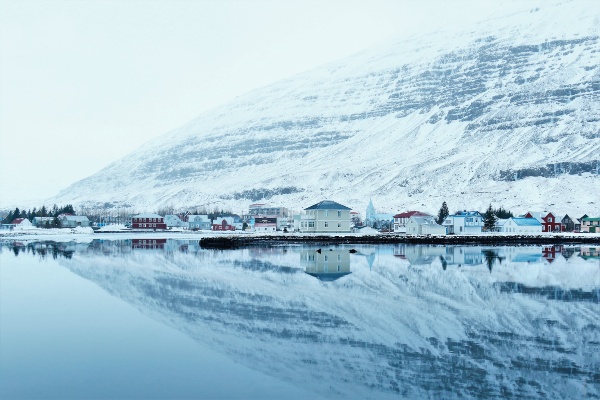
Check your GPS System
The roads in Iceland are different to that of many other European countries. With this in mind, it’s important to familiarise yourself with your GPS so that you know what the different terms, signs and roads mean. This will help your journey run smoothly and prevent you from getting lost!
Give yourself Plenty of Time
As mentioned above, the weather can change in an instant in Iceland, which is why it’s important to allocate plenty of time during your road trip. This will help ensure you drive safely without rushing. It also allows more time for you to see the top sights around this magnificent country.
Go Slow on the F-Roads
As the F-roads are some of the most rural paths in Iceland, you must take your time when travelling on them. You may encounter river crossings, uneven paths and animals on the road. With this in mind, always go slower than necessary, allowing you to be better prepared for any of the above.
Summary
We hope that after reading this guide to driving in Iceland in winter and snow, you can now visit with all this information in mind. A road trip around this beautiful country will provide you with unmatched scenery and memories to last a lifetime. No matter where you go, you will find stunning sights, raw natural beauty and incredible wildlife at every turn.
If you’re planning to drive in Iceland, you’re likely in need of transport. Fara has a great range to choose from. No matter what time of year you decide to visit, there are vehicles for every type of traveller.
